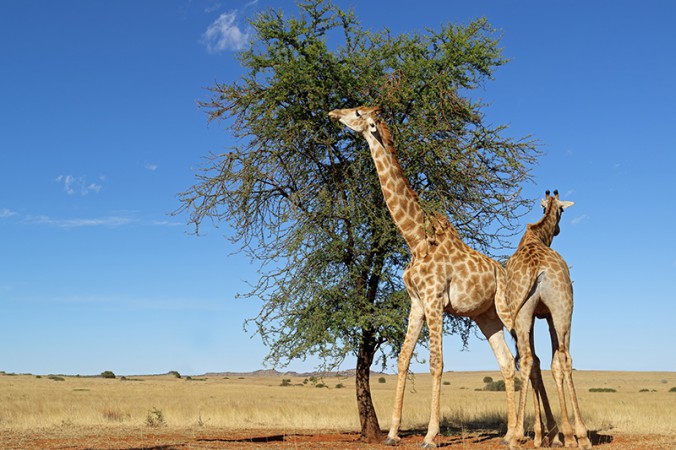This blog begs the question do trees talk? Or perhaps more specifically do they communicate with each other? According to the dictionary definition, language is what people use when we talk to each other. Looked at this way, humans are the only beings who can use language, because the concept is limited to our species. But do trees communicate with each other? If so how, they definitely do not produce sounds, so there’s nothing to hear. It turns out trees have a completely different way of communicating – they use scent.
Scent as a means of communication? The concept is not totally unfamiliar to us. Why else would we use deodorants and perfumes? Scientists believe pheromones in sweat are a decisive factor when we choose our partners. So, it seems fair to say that we possess a secret language of scent, and trees have demonstrated they do as well.
For example, giraffes on the African savannah feeding on umbrella thorn acacias, move around quickly. It takes the acacias mere minutes to start pumping toxic substances into their leaves to rid themselves of these large herbivores. The giraffes get the message and move on to other trees. But they don’t move on to trees close by, they walk past a few trees and resumed their meal only when they had moved about 100 metres or so away.
The reason for this behaviour is that the acacia trees that were being eaten give off a warning gas (specifically, ethylene) that signals to neighbouring trees that a crisis was at hand. Immediately all the forewarned trees also start to pump toxins into their leaves to prepare themselves. However, the giraffes are wise to this game and therefore move farther away to a part of the savannah where they can find trees that were oblivious to what is going on, or else they moved upwind where they could find acacias close by that have no idea the giraffes are present.
In addition, the tree leaf tissue sends out electrical signals, just as human tissue does when it is hurt. However, the signal is not transmitted in milliseconds, as are human signals, instead, the tree signal travels at the slow speed of a centimetre a minute. Accordingly, it takes an hour or so before defensive compounds reach the leaves to spoil a residents pest’s or herbivores meal. However, this slow tempo does not mean that a tree is not on top of what is happening in different parts of its structure. If the roots find themselves in trouble, this information is broadcast throughout the tree, which can trigger the leaves to release scent compounds that are specifically formulated for the task at hand.
So clearly trees communicate with each other. But why are trees such social beings? The reasons are the same as for human communities – there are advantages in working together. A tree is not a forest. On its own, a tree cannot establish a consistent local climate and is at the mercy of wind and weather. But together, many trees create an ecosystem that moderates extremes of heat and cold, stores a quantity of water, and generates a great deal of humidity.
What and how much information is exchanged between trees is a subject that is only just beginning to be researched. For instance, the magazine Nature reports that scientist Suzanne Simard has discovered that different tree species are in contact with one another, even when they regard each other as competitors.
So talk to a tree next time you are in a forest, it may answer you back, even if, stealing a line from Bing Crosby’s famous Irish song Galway Bay, in “…a language that the strangers do not know”.
